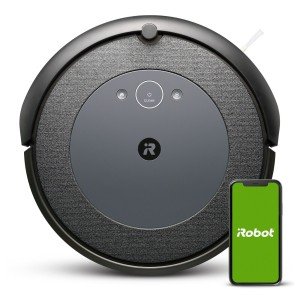The Rise of Self-Cleaning Vacuums: Revolutionizing Household Maintenance
In an age where convenience and effectiveness reign supreme, home devices have actually progressed to meet the demands of busy lifestyles. One of the current developments in the world of home cleaning is the self-cleaning vacuum. These advanced devices are designed not only to clean floorings however also to maintain themselves with minimal human intervention. This article explores the workings, advantages, potential drawbacks, and future of self-cleaning vacuums.
Understanding Self-Cleaning Vacuums
Self-cleaning vacuums represent a considerable leap from traditional vacuum cleaners. They are geared up with smart innovations that allow them to carry out upkeep jobs instantly. This includes tasks such as clearing the dustbin, cleaning the brush rolls, and even charging themselves. best robot vacuum cleaner Robot Vacuum Mops are developed to decrease the time users invest in upkeep, allowing for a more smooth cleaning experience.
Key Features of Self-Cleaning Vacuums
| Function | Description |
|---|---|
| Self-Emptying Dustbin | Instantly disposes of gathered dirt and particles into a larger bin. |
| Brush Roll Cleaning | Utilizes brushes that remove twisted hair and debris to enhance efficiency. |
| Smart Navigation | Utilizes sensing units and cams for efficient cleaning courses and barrier avoidance. |
| App Integration | Makes it possible for users to manage the vacuum remotely and receive upkeep notifications. |
| Self-Charging | Returns to a docking station to charge when the battery is low. |
The Advantages of Self-Cleaning Vacuums
The advantages of integrating a self-cleaning vacuum into a household cleaning regimen are numerous:
- Convenience: Self-cleaning vacuums significantly decrease the manual work related to standard vacuuming. Users no longer need to stop to empty dustbins after every cleaning session.
- Time-Saving: By automating cleaning and upkeep jobs, users can assign their time to other important activities.
- Consistency in Cleaning: With advanced navigation technologies, self-cleaning vacuums can keep a routine cleaning schedule, guaranteeing floors are regularly tidy.
- Improved Indoor Air Quality: Many self-cleaning vacuums come with advanced filtering systems that trap irritants and contaminants, contributing to better indoor air quality.
- Low Maintenance: These vacuums require less regular attention regarding maintenance, as a number of their upkeep jobs occur automatically.
Preparing the Pros and Cons
| Pros | Cons |
|---|---|
| Convenience and ease of usage | Greater preliminary cost |
| Constant cleaning results | May need software updates |
| Advanced filtering alternatives | Dependence on innovation |
| Less manual upkeep | Limited to home cleaning tasks |
Possible Drawbacks of Self-Cleaning Vacuums
Despite their advantages, self-cleaning vacuums are not without their obstacles:
- Cost: The preliminary financial investment for a self-cleaning vacuum can be considerably higher than traditional models.
- Dependability: Like any smart innovation, these vacuums depend upon software application updates and battery performance. Users might come across problems if the vacuum malfunctions.
- Minimal Cleaning Capacity: While self-cleaning vacuums excel on tough floorings and low-pile carpets, they might have a hard time on thicker carpets or rugs.
- Complex Repairs: Issues developing from advanced technology might result in intricate repairs and even demand professional support.
Selecting the Right Self-Cleaning Vacuum
When considering a self-cleaning vacuum, it is necessary to assess numerous features and functionalities to figure out the best fit for your home needs. Here are some elements to think about:
- Floor Types: Identify the kinds of floorings in your house. Some vacuums carry out much better on carpets, while others are designed for tough floorings.
- Dustbin Capacity: Check the capability of the self-emptying dustbin to guarantee it fulfills your cleaning frequency and volume.
- Battery Life: Consider the length of time the vacuum can run before needing to recharge.
- Smart Features: Look for vacuums with app integration that enables remote control and customization.
- Upkeep Requirements: Assess how often you will need to replace filters, clean the brushes manually, and perform other upkeep jobs.
Frequently Asked Questions (FAQs)
1. How does a self-cleaning vacuum work?Self-cleaning vacuums are geared up with sensors and smart innovation that allow them to navigate and tidy floors effectively. They auto-empty dirt and particles into a docking station and frequently self-clean brush rolls.
2. Are self-cleaning vacuums worth it?While they include a higher cost, many users find the convenience and time cost savings validate the cost, specifically in hectic households.
3. Can self-cleaning vacuums be controlled through mobile phone?Yes, many self-cleaning vacuums come with app combination, enabling users to control cleaning schedules, display battery life, and receive upkeep alerts remotely.
4. How typically do I require to empty the base station?This depends on how often the vacuum is utilized and the size of the dustbin. Normally, users might need to clear it every few weeks.
5. Do self-cleaning vacuums work on carpets?Numerous self-cleaning vacuums carry out well on low to mid-pile carpets but may battle with high-pile carpets or thick rugs.
The Future of Self-Cleaning Vacuums
As innovation continues to advance, the future of self-cleaning vacuums looks appealing. Innovations might cause even more effective cleaning systems capable of managing varied floor types, incorporating AI for smarter cleaning decisions, and improving general user experience with much better connectivity.
Top manufacturers are vying to record a significant share of this market by continually enhancing the design and features of their self-cleaning vacuums. The focus is likely to stay on enhancing functionality, affordability, and energy effectiveness, making these devices an essential part of modern home management.
In conclusion, self-cleaning vacuums represent an exceptional improvement in home cleaning technology. In spite of their few downsides, the advantages they provide-- benefit, time cost savings, and enhanced cleaning efficiency-- make them an attractive option for many households seeking to improve their cleaning routines and improve their living spaces.

